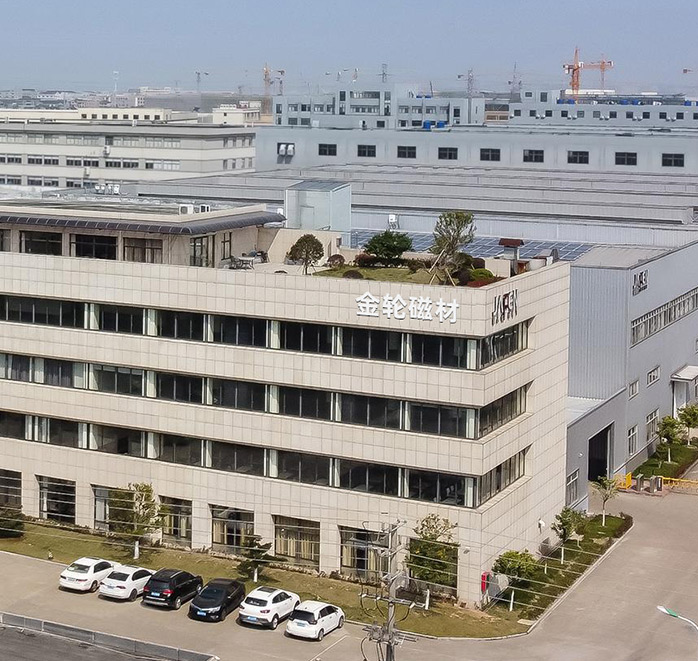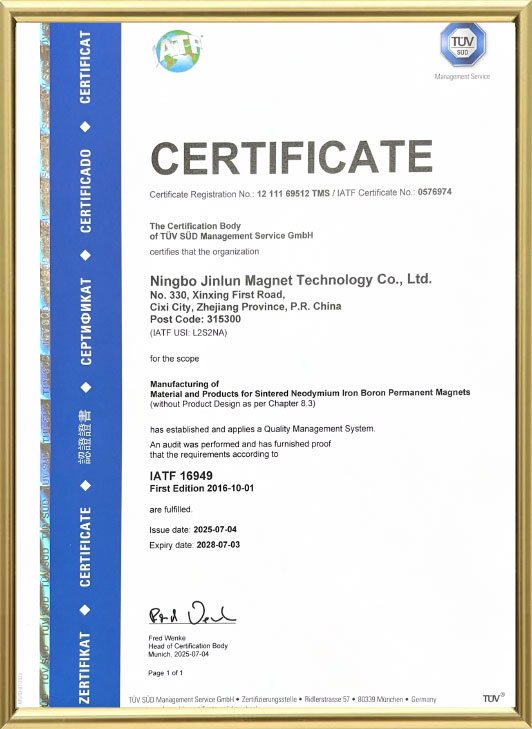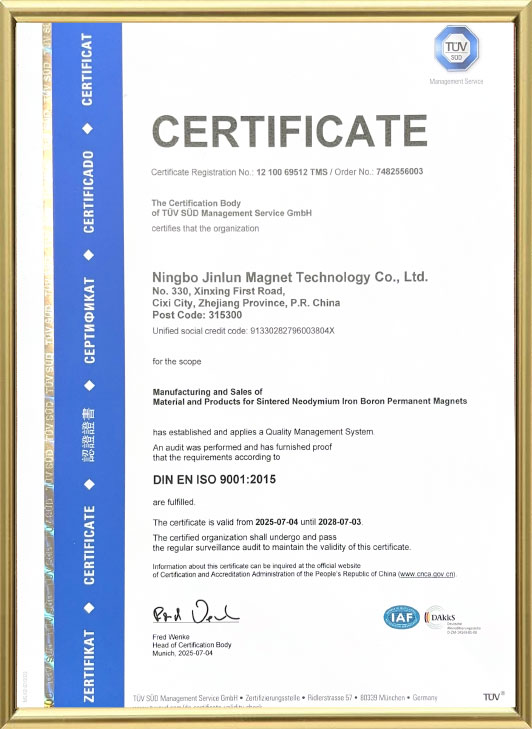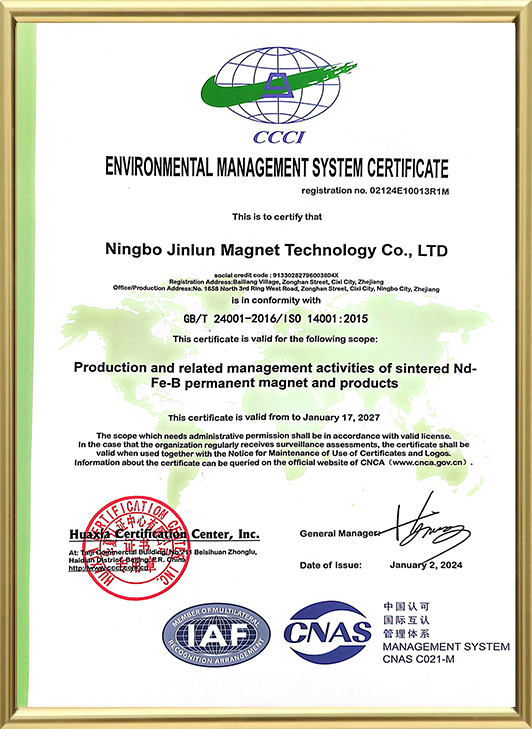I. The Core Positioning and Industry Value of Sintered NdFeB Magnets for Wind Power
Sintered NdFeB Magnets for Wind Power are key components supporting the upgrade of wind turbines towards larger sizes, higher efficiency, and lighter weight. In direct-drive and semi-direct-drive wind turbines, these magnets serve as the core magnetic element of the rotor. Their high magnetic energy product creates a stable and strong magnetic field, replacing traditional electric excitation systems and achieving efficient conversion of wind energy into electrical energy. Compared to traditional electric excitation generators, permanent magnet wind turbines using Sintered NdFeB Magnets for Wind Power can reduce excitation losses by 30%-50%, increasing unit efficiency by 5%-8%. Furthermore, they eliminate vulnerable components such as slip rings and carbon brushes, reducing operational and maintenance costs. Sintered NdFeB Magnets for Wind Power have become a core material in the mainstream technology pipeline of the global wind power industry.
From an industry perspective, with the advancement of global renewable energy policies and the continued growth of wind power installed capacity, the demand for Sintered NdFeB Magnets for Wind Power is expanding at a massive scale. According to industry data, each 1.5MW direct-drive wind turbine requires approximately 0.8-1.2 tons of these magnets, while a 3MW unit requires 1.5-2.0 tons. Large units of 5MW and above require over 2.5 tons. The global market for sintered NdFeB magnets for wind power maintains an average annual growth rate of over 15%, making it a key growth driver for sintered NdFeB applications.
II. Application Scenarios and Performance Requirements for Sintered NdFeB Magnets in the Wind Power Sector
(I) Core Application Scenarios
Direct-drive wind turbine rotors: This is the core application scenario for sintered NdFeB magnets for wind power. Direct-drive units eliminate the need for a gearbox; the magnets are directly mounted on the generator rotor hub. They must operate stably and long-term at low speeds (typically 10-20 rpm) and high torque. Magnets are often designed in an arc or sector shape, using multi-pole magnetization (typically 20-40 poles) to create a uniform magnetic field, ensuring stable generator power output. For example, a 3MW direct-drive wind turbine rotor can reach a diameter of 3-4 meters, requiring hundreds of arc-shaped Sintered NdFeB Magnets for Wind Power. Each magnet typically measures 300-500mm (length) x 80-120mm (width) x 30-50mm (thickness). High-strength adhesive bonding and mechanical fastening prevent dislodging during high-speed rotation.
Semi-direct-drive wind turbines retain a small gearbox, with magnets mounted on the high-speed generator rotor. Operating speeds (100-300 rpm) are higher than those of direct-drive turbines, placing higher demands on the magnets' resistance to centrifugal forces. Rectangular or trapezoidal Sintered NdFeB Magnets for Wind Power are typically used, inserted into the rotor core slots via an interference fit to ensure structural stability under centrifugal forces. They also require high magnetic uniformity to reduce operating noise and vibration.
Wind turbine pitch and yaw systems: In wind turbine pitch motors (which control blade angle) and yaw motors (which adjust the nacelle's orientation), miniaturized Sintered NdFeB Magnets for Wind Power (typically 20-50mm in size) are used to improve motor response speed and control accuracy. For example, pitch motors must rapidly adjust blade angles in response to changing wind speeds. The high coercive force of the magnets ensures stable torque during frequent motor starts and stops, preventing efficiency losses caused by blade adjustment lag.
(II) Key Performance Requirements
Ultra-high magnetic energy product and coercive force: Direct-drive turbine rotors are large, requiring Sintered NdFeB Magnets for Wind Power to possess a high magnetic energy product ((BH) max ≥ 380kJ/m³) to generate a strong magnetic field within a limited space and reduce magnet usage. They also require a high intrinsic coercive force (Hcj ≥ 1800kA/m) to resist demagnetization caused by complex magnetic field interference and temperature fluctuations at wind power sites, ensuring a magnetic performance degradation rate of ≤ 10% over the turbine's 20-year design life.
Excellent low-temperature stability: Wind power sites are often located at high altitudes and latitudes, where winter temperatures can drop as low as -40°C to -30°C. This requires magnets to exhibit low-temperature degradation characteristics, with a remanence (Br) decay rate of ≤ 3% at -40°C and no significant decrease in intrinsic coercive force (Hcj) to prevent low temperatures from causing increased brittleness or a sudden drop in magnetic performance. High mechanical strength and weather resistance: Large wind turbine magnets can weigh up to 5-10kg each and are subject to significant mechanical stress during assembly and transportation. These magnets must possess a bending strength of ≥28MPa and a compressive strength of ≥850MPa to prevent breakage. They must also withstand harsh environments such as high humidity (80%-95% relative humidity), salt spray (for coastal wind farms), and sandstorms at wind turbine sites. The surface must be coated with a thick epoxy resin coating (≥50μm) or nickel-copper-nickel plating (≥20μm). They must pass a neutral salt spray test for 1000 hours without corrosion and a damp heat test (40°C, 95% RH) for 2000 hours without performance degradation.
Dimensional accuracy and consistency of large magnets: Magnets used in units larger than 3MW often exceed 400mm in length, requiring dimensional tolerances of ±0.05mm. Curved magnets must have a curvature tolerance of ≤0.02mm. Otherwise, uneven rotor magnetic field distribution will occur, increasing unit vibration and noise. The magnetic performance deviation of magnets within the same batch must be ≤±2% to ensure a stable power waveform and prevent current fluctuations from impacting the power grid.
III. Manufacturing Process and Technical Difficulties of Sintered NdFeB Magnets for Wind Power Applications
(I) Core Manufacturing Process
Preparation of High-Purity, Large-Size Raw Materials: High-purity rare earth elements (Nd purity ≥99.5%, Dy purity ≥99.9%), low-carbon electrolytic iron (C content ≤0.005%), and high-purity ferroboron (B content 20±0.5%) are mixed according to an optimized "Nd-Fe-B-Dy" formula. Large-size alloy ingots (each weighing up to 50-100kg) are produced in a 1000kg-class vacuum induction melting furnace, avoiding the uneven composition associated with smaller ingots. Ningbo Jinlun Magnet Technology Co., Ltd. leverages internationally advanced permanent magnet production equipment to reliably produce large-size ingots, providing a foundation for large-scale magnet manufacturing. Precision Powdering and Directed Magnetic Field Orientation: The alloy ingot is embrittled using a hydrogen crushing (HD) process and then processed through a large-scale jet mill (capacity ≥ 500kg/h) to produce a uniform powder of 2-4μm. The oxygen content of the powder is controlled below 300ppm to prevent oxygen impurities from affecting magnetic properties. During the magnetic field orientation stage, a large multi-pole orientation press (worktable size ≥ 1000mm × 500mm) is used to apply a 2.0-2.5T directional magnetic field to ensure that the magnetic domains of the large-scale powder are orderly aligned along the direction of rotor rotation, thereby improving the utilization rate of the magnet's magnetic energy product. Large magnet molding and low-temperature sintering: For complex shapes such as arcs and sectors, a servo-driven large-scale molding press (maximum pressure ≥ 20,000 kN) is used for molding. Staged pressurization (low-pressure pre-pressing followed by high-pressure densification) ensures uniform density (≥ 5.9 g/cm³) for large-sized green bodies. Sintering is performed in a large vacuum sintering furnace (furnace dimensions ≥ 1500 mm × 800 mm × 800 mm). The temperature is controlled between 1020°C and 1080°C, with a heating rate reduced to 3°C/min and a holding time extended to 8-10 hours. This reduces uneven shrinkage during sintering of large-sized magnets and increases density to ≥ 7.6 g/cm³. Precision Machining and Enhanced Surface Treatment: Large magnets undergo multi-faceted grinding using a CNC gantry grinder (machining range ≥ 2000mm × 1000mm), achieving a dimensional accuracy of ±0.03mm. Surface treatment utilizes an automated spray coating line, achieving an epoxy resin coating thickness deviation of ≤5μm and coating adhesion of 5B (no peeling in a cross-cut test). Finally, a 100% inspection using a large magnetic performance tester (capable of measuring magnets ≤10kg) and a three-dimensional coordinate measuring machine (measuring range ≥2000mm) ensures product quality.
(II) Technical Difficulties and Breakthroughs
Controlling Sintering Deformation in Large Magnets: Magnets over 400mm in length are prone to sintering with "center bulging" or "edge shrinkage." By incorporating an elastic support structure into the sintering tooling and combining it with staged cooling (1000°C to 800°C at a rate of 2°C/min), deformation can be controlled to within 0.1mm. By optimizing sintering tooling, Ningbo Jinlun Magnet Technology Co., Ltd. has achieved stable production of large magnets measuring 500mm × 120mm × 50mm, with a deformation rate of less than 0.05%.
Balancing low-temperature embrittlement resistance and magnetic properties: Adding dysprosium (Dy) improves low-temperature stability, but this increases cost and reduces the magnetic energy product. The industry uses a combined process of "grain boundary infiltration + low-temperature tempering." This involves infiltrating a trace amount of Dy (1-2%) onto the magnet surface, followed by a two-hour low-temperature tempering at 600°C. This ensures an Hcj ≥ 1900kA/m at -40°C, while maintaining a (BH) max ≥ 370kJ/m³. Ningbo Jinlun Magnet Technology Co., Ltd. has achieved a balance between low cost and high performance using this process. Consistency Control in Mass Production: Orders for large wind turbine magnets often number in the thousands, requiring automated production lines to monitor parameters throughout the entire process—melting, powder making, molding, and sintering. This involves the introduction of an AI-powered visual inspection system (with an inspection rate of 50 magnets per hour) and online magnetic performance monitoring equipment to eliminate defective products in real time. Ningbo Jinlun Magnetic Materials Technology Co., Ltd., leveraging its scale advantage of an annual production capacity of 8,000 tons, ensures a consistency deviation of ≤±1.5% within the same batch of magnets.
 EN
EN English
English 中文简体
中文简体 русский
русский Deutsch
Deutsch 日本語
日本語 한국어
한국어



















